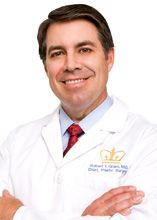Planning Cosmetic Procedures for Bridal Patients
A cosmetic surgeon can help a bride-to-be meet her beauty goals by proposing a long-term plan.

Brides-to-be often dream of looking their absolute best on their wedding day, so why shouldn’t plastic surgery professionals also give them that level of attention for their big day?
At least a year in advance of the big day, a bride should not only plan her unique look, but also act on it to prevent last-minute beauty regimens from stressing out her mind and body. A cosmetic surgeon can help a bride meet her beauty goals by proposing a long-term plan. Acting on this plan over a longer period of time with subtle changes and procedures is vital to achieve the look of a serene and ethereal bride.
So, what are some of the key components on the bridal beauty road map? Here is a snapshot of one that might be just right for your patient.
12 Months Prior
One year is enough time to implement changes in the bride-to-be’s health regimen that will have a huge impact on her wedding day look. Instead of starting a crash diet a few weeks before the wedding, now is the time to launch a diet and exercise plan that will trim the waist, hips, and upper arms.
You can advise the patient to keep a food diary for a week and then take a look at it to decide where she can cut back without feeling deprived. A good guideline is to make sure the patient eats 3 meals plus 2 small snacks each day.
9 Months Prior
Is the bride ready for her close-up? If unwanted facial or body hair is a problem, then it is time to start taking care of it for good.
Laser hair removal is one method to remove unwanted hair and inhibit future hair growth. Although a minimum of 3 visits spaced out by least 2 weeks are necessary for permanent results, patients can rest assured that this method will foster the best and smoothest results.
If the bride-to-be is thinking of going strapless, then this would be the best time to think about a breast enhancement. Whether the procedure is a breast reduction, augmentation, or lift, 9 months provides optimal healing time for the best results.
6 Months Prior
Translucent skin is the foundation of that glowing-bride look, so why not help the patient achieve it with a series of facials? Though women often complain of breakouts immediately following an initial facial, a regular facial routine over a prolonged period of time ensures the patient will get past the initial breakout phase and move onto beautiful, clear skin.
If a bride is looking to smooth out her overall skin surface, then microdermabrasion is also an option at the 6-month mark.
3 Months Prior
If the bride-to-be is interested in a targeted liposuction procedure, then 3 months before the wedding is the perfect time to ensure her body will be smooth under that white dress. Advise the patient to undergo the procedure well in advance to give her body enough time to heal and allow the results to appear as natural as possible.
To ensure the bride’s eyes are framed in all their lushest glory, now is the perfect time to start eyelash enhancement therapy. The Latisse solution is applied nightly, and after the 16-week initial treatment period, the results are absolutely staggering.
1 Month Prior
After all that wedding planning, your patient might want her eyes to look refreshed. To address sagging in the upper eyelid or puffiness in the lower lid with minimal recovery time, blepharoplasty is a must.
If laugh lines or wrinkles are issues for the patient, you can also suggest a non-surgical injectable or filler, such as Botox or Juvederm.
1 Week Prior
Now that the bride-to-be is in the home stretch, it is more important than ever to pay close attention to her diet. Water is her true friend, as it will not only hydrate her body, but also help keep her skin looking flawless. The bride should stay away from foods high in salt, which will increase water retention and bloating. I also recommend incorporating foods like oranges, avocado, and cantaloupe in every meal to further fight water retention.
--
Your patient’s big day will hold memories and photos that she will look back on for years to come. With some help from a board-certified plastic surgeon, the bride will have a plan in place to ensure she will look her best as she walks down the aisle.
Robert T. Grant, MD, MSc, FACS, is Chief of the combined Divisions of Plastic Surgery at New York-Presbyterian Hospital-Columbia University Medical Center and New York-Presbyterian Hospital-Weill Cornell Medical Center. He is also Associate Clinical Professor of Surgery in the College of Physicians and Surgeons at Columbia University and Adjunct Associate Professor of Clinical Surgery at Weill Cornell Medical College. For more information about Dr. Grant or to contact him, visit his website at www.robertgrantmd.com.